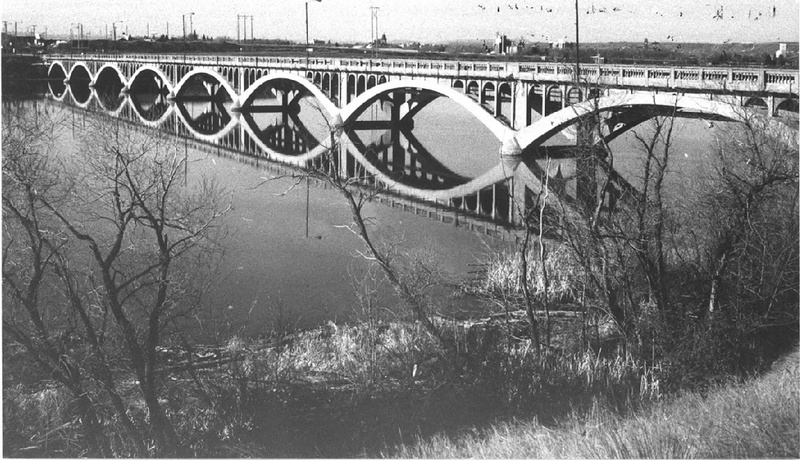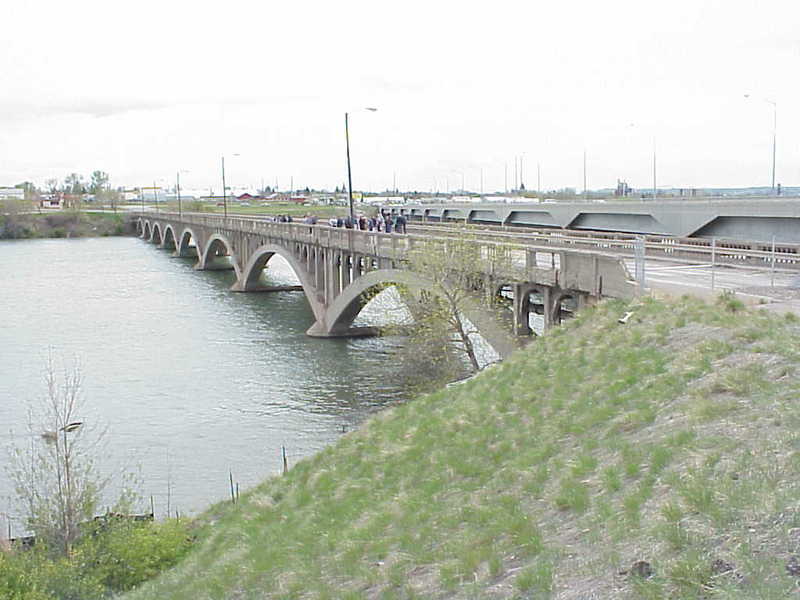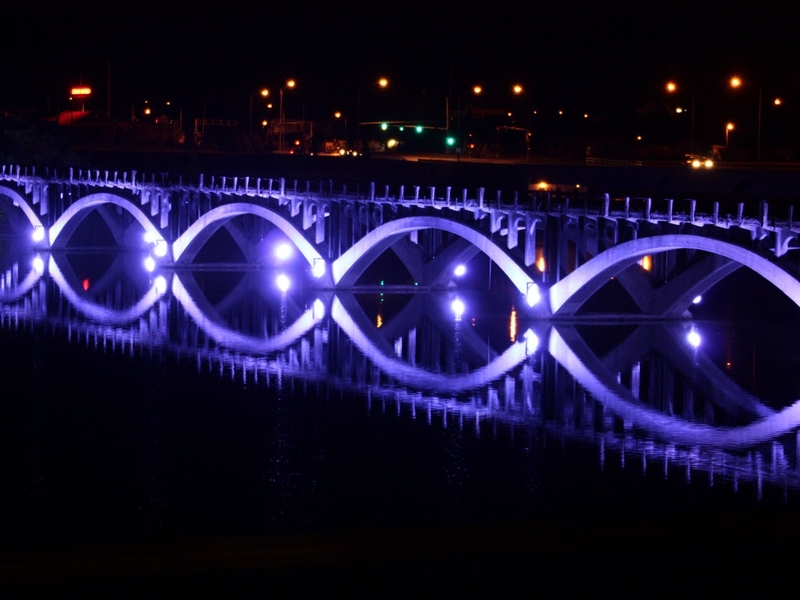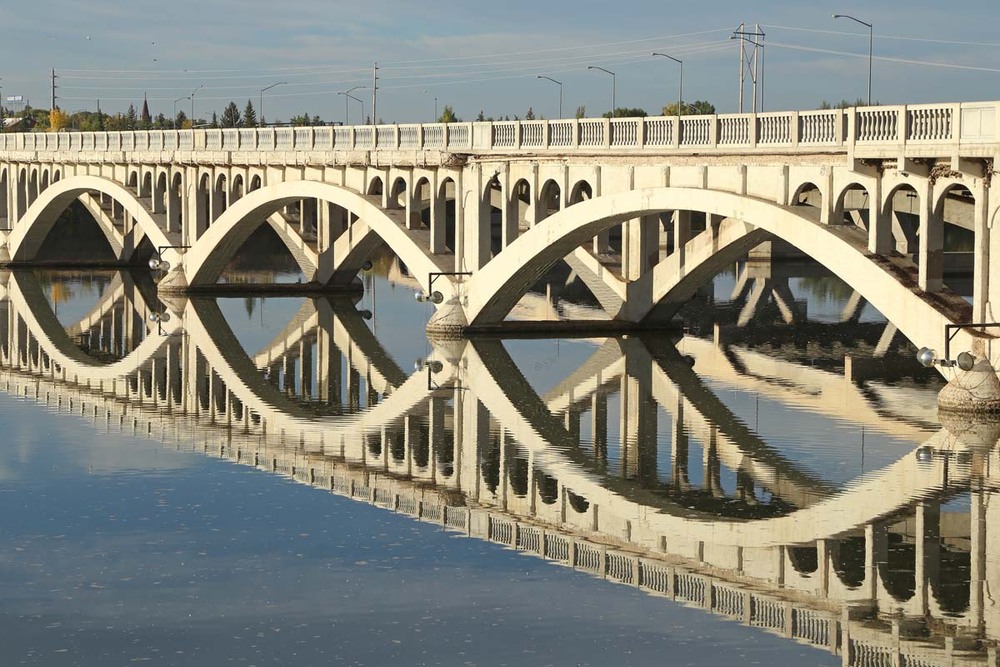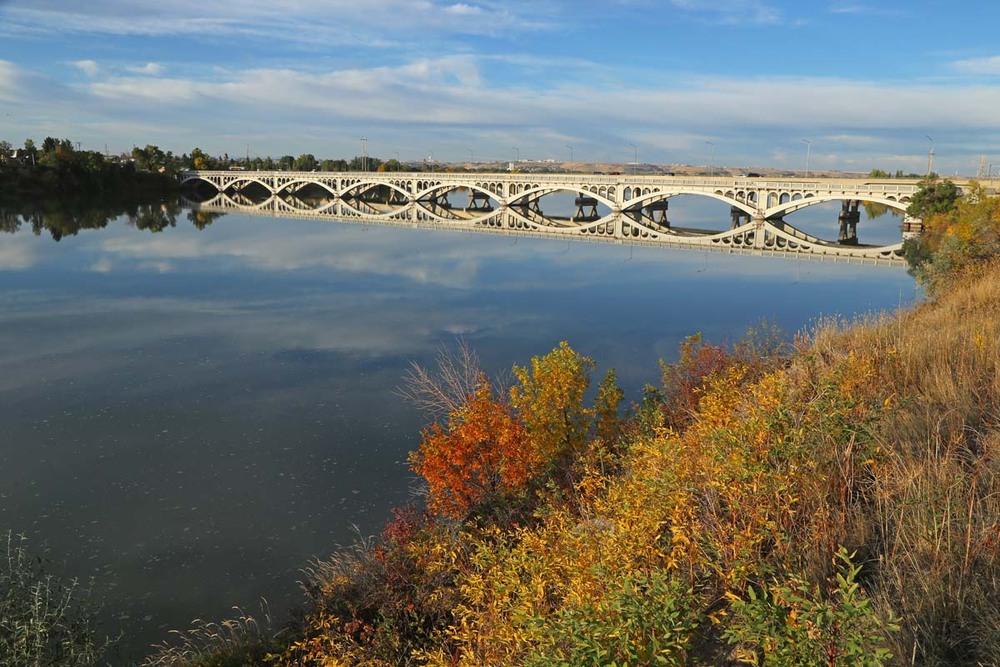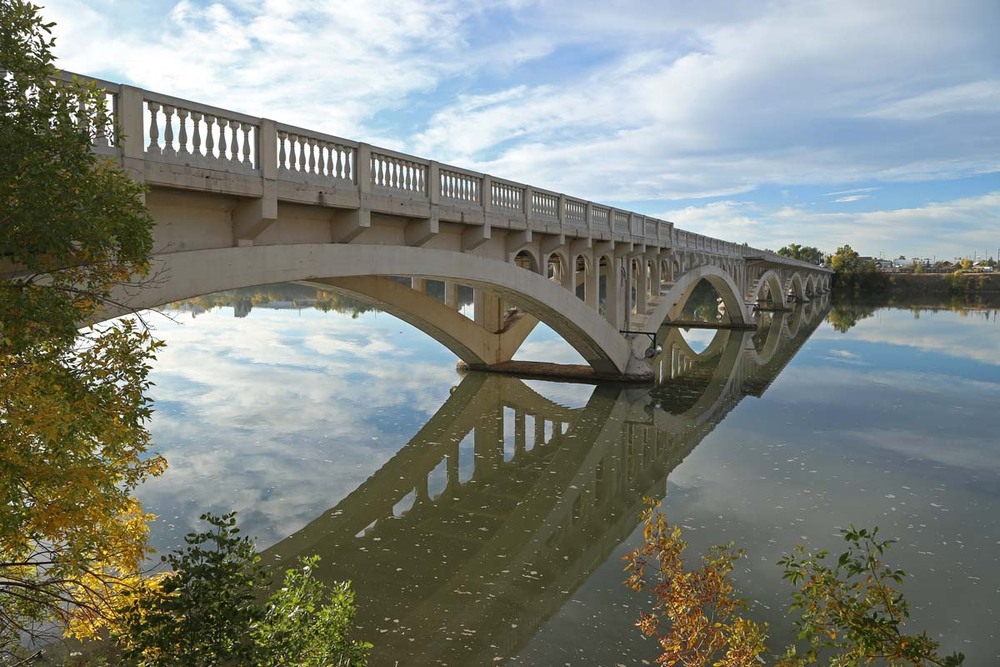Tenth Street Bridge
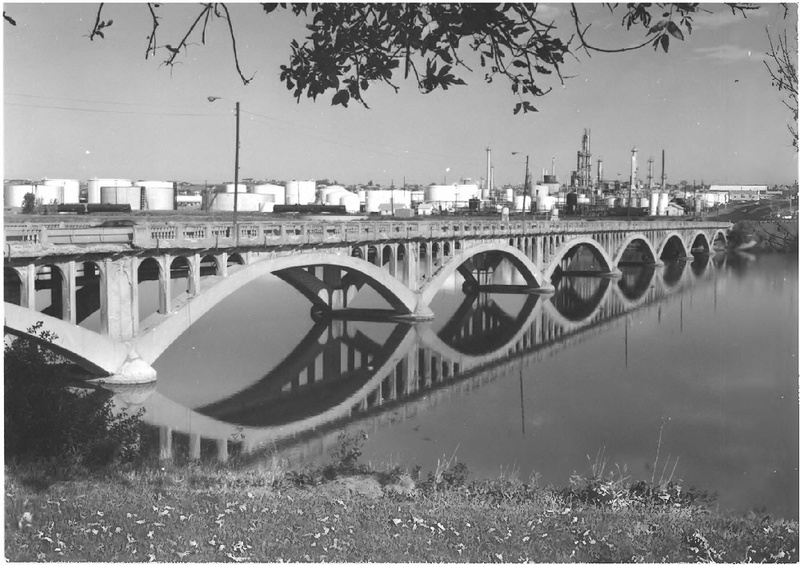
When this critical link between Great Falls and Black Eagle opened in December of 1920, the Great Falls Tribune described the Tenth Street Bridge as “a carved monument above the water.” Reflecting the pride and optimism of the community and the vision of Paris Gibson, the founder of Great Falls, the imposing structure of eight sweeping arches spans 1,130 feet across the Missouri River. It is Montana’s longest and oldest reinforced concrete, open-spandrel, ribbed-arch bridge. Cascade County could not consider citizens’ pleas for a new bridge until state legislation in 1917 authorized use of county funds with city limits. Voters approved more than $224,000 for construction of the bridge in 1918. When bids exceeded available funds, county commissioners held a design competition. Spokane structural engineer Ralph Adams and Great Falls architect George Shanley collaborated on the winning plans. State Highway Commission engineer Evarts Blakeslee supervised construction. Crews built a railroad trestle across the river and used handcars to transport the mixed concrete to wooden forms for the cast-in-place arches. When completed in 1920 it represented “the most advanced ideas of modern bridge building” according to the Montana Highway Commission. Construction of the access to the south end of the bridge proved a major financial problem for the city, while the county completed the north approach as part of a federally aided project. Historically and aesthetically important, the Tenth Street Bridge combines skillful engineering with graceful elegance to complement Great Falls’ most significant natural resource: the Missouri River.
Images

